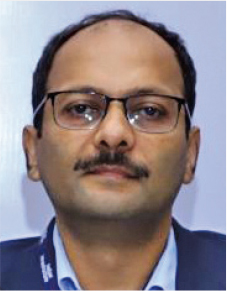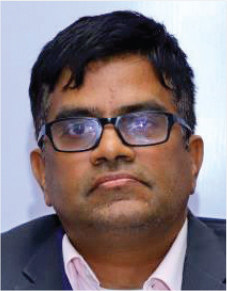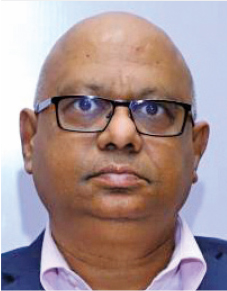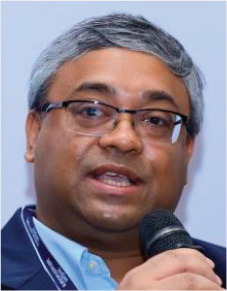The pace of development in the green hydrogen and green ammonia segment in India over the past few years has been impressive. The government has played a proactive role by releasing the first phase of the green hydrogen policy, providing incentives related to banking and interstate transmission system waivers. Now, the second phase is awaited, which is expected to provide mandates/obligations for green hydrogen consumption to different industries. The industry, including private and state-owned players, has already started taking strides in this space, by working on pilot projects, announcing ambitious plans and collaborating with technology providers. However, several hurdles with respect to costs, availability of firm renewable energy, selection of the right technology and lack of clarity on government subsidies in this space are emerging. At the fourth edition of the “Green Hydrogen in India” conference organised by Renewable Watch, several industry players shared their plans and the future outlook. Edited excerpts…

Kapil Maheshwari
Reliance has been taking a very holistic approach on the entire green hydrogen ecosystem. We have realised that we need to be involved in almost every aspect of the ecosystem, including the development of green hydrogen, right from the production of renewable energy to everything that is related to upstream, midstream and downstream of the entire value chain. The company is coming up with the following four gigafactories: solar modules, electrolysers, advanced chemical cells and battery storage technology, and fuel cells.
We already consume a considerable amount of grey hydrogen in our refineries. As a result, we are developing a 100 GW solar installation and will then be evaluating how to use this solar energy for both our captive consumption and the production of green hydrogen, as we have pledged to be net zero by 2035. Furthermore, the company’s chairman has stated a 1-1-1 vision, in which he believes India will be the leading exporter of green hydrogen at a dollar per kg within the next one decade.
India has an opportunity to not follow some of the other players or countries, but to lead because the country is practically at the same stage as the rest of the world. There is clearly no distinction between us or anyone else, be it with regard to the production of electrolysers, execution of pilot projects, or development of methods for dealing with hydrogen. Reliance has partnered with Denmark-based Stiesdal to manufacture hydrogen electrolysers. For the future, one should plan for interchangeability because technology obsolescence is also something we need to consider, both from a project and manufacturing standpoint.
We are currently producing 1 million tonnes of grey hydrogen in our refinery. The first focus market for the company would be our own captive requirements. Also, going forward, the export of green hydrogen is definitely on the table. Furthermore, we are currently assessing various renewable energy options, including hybrid, wind and solar energy, as well as the possibility of including a storage component for producing green hydrogen. Biogas and biomass can also be used to produce green hydrogen. However, it is key to ensure that the entire process does not have efficiency issues.

Vineet Mittal
The Avaada Group is looking forward to becoming a company that converts sand into green molecules. Currently, we are a green electron company. We have more than 4 GW of operating assets and we have also monetised around 1.2 GW of assets to Tata Power. Earlier in 2022, Avaada built the world’s single-largest project of 1,250 MW in Rajasthan. The company is also setting up a 5 GW cell-to-module factory. In the green hydrogen and green ammonia segments, we are looking at awarding an engineering, procurement and construction contract early in 2023.
In terms of technology, we are open to every technology available. It all comes down to how many units of electricity are needed per unit of hydrogen production. The government’s role has been proactive in this space and several committees have been formed. The government intends to succeed in this industry without compromising on safety and ensuring that the latest technologies are promoted.
We are actively looking at acquiring electrolyser companies. The company’s intent is to control the whole supply chain of the green hydrogen/green ammonia space. Going forward, we are aiming for 30 GW of solar, wind and pumped hydro generation by 2030. We will also export the first million tonnes of green ammonia that we produce. We have received the preliminary approvals from a bank to fund the project.

Sudhir Pathak
We are fortunate to be in this era of green energy transition. The concept of green hydrogen is not new to the world; it has existed for over 90 years now. In the 1930s, green hydrogen was viable and ammonia was produced in 1938 for the first time, using hydropower- and alkaline-based electrolysers. However, soon after, with the onset of industrialisation and rapid development in the west, the world started drifting towards coal and natural gas.
Today, the earth’s temperature is mounting, but we are responsible for its well-being. Moreover, energy prices are rising all over the world, accelerating the adoption of alternatives such as green hydrogen. Hero Future Energies aims to first establish a pilot project for green hydrogen, as currently it is not as cost effective as compared to its alternatives.
We have a strategic partnership with Ohmium, a polymer electrolyte membrane (PEM)-based electrolyser manufacturer and are biased towards PEM due to its higher space density and its scalability. However, overall, at present, we are agnostic towards technology because going forward, the key determinant for choosing the right technology will be the levellised cost of hydrogen.
In terms of pilot projects, we initially aim to produce green hydrogen for industries that are already using grey hydrogen. This includes roughly four to five types of industries that will lead the transition from the existing grey hydrogen to green hydrogen. Blending of green hydrogen with natural gas is another good opportunity for India. The mobility sector also poses several opportunities, especially in the US and Europe, where heavy duty vehicles are being modified into dual-fuel vehicles or fuel cell electric vehicles. Another use case includes steel manufacturing based on direct reduction of iron. For this, a pilot-scale project may be launched in India and Europe. Green hydrogen can also be utilised through fuel cells for electrification and storage. Currently, with PEM and alkaline electrolysers, it is not viable. However, with the movement towards solid oxide technology, green hydrogen can become viable for energy storage and round-the-clock (RTC) applications. In addition, green hydrogen can be utilised for full displacement in gas turbines.
India is eager to be the front runner as a domestic manufacturer and exporter of hydrogen. With fluctuating energy and oil prices, it is a far-sighted approach to invest or subsidise R&D and arrive at the 1-1-1 goal for green hydrogen as soon as possible. As an organisation, we aspire to reach 1 GW of electrolysis capacity, which produces 400-500 tonnes per day of green hydrogen over the next three years. However, as this is an evolving industry, it is likely that we will revise our vision as per the policy and technology developments that are to come in the coming months.

Dr Arul Shanmugasundaram
Our renewable energy portfolio as of now is about 4 GW and we intend to achieve 10 GW by 2025. We are planning a green hydrogen pilot and it should be operational by March 2023. It is a PEM-based solar pilot and it targets to produce about 70 kg of hydrogen per day. As our pilot is relying purely on solar power, our technology choices are limited because we cannot rely on alkaline as it needs RTC power. Also, we wanted a technology that can work with power variations and not be dependent on drawing banked power or drawing from other sources. We intend this pilot to be an R&D investment to learn the market and see how the market develops in terms of demand.
There are a bunch of issues that have emerged with the pilot project. For instance, the Petroleum and Explosives Safety Organisation rules are still fluid. The safety requirements are not clear and issues regarding water disposal are also there. Also, it is not clear whether returns in the market from green hydrogen sale will be sufficient.
The government has done a lot, especially on the generation side. The Ministry of Power has added value in terms of banking. The other thing, which is also critical, is to produce green hydrogen at different places, using a transmission infrastructure. This infrastructure that the government is providing is a unique model that is not followed anywhere else in the world. Thus, from the generation side, a lot has been done but on the demand side, announcements are yet to be made in terms of green hydrogen mandates.
If the demand develops and there is a market, then we are ready to produce green hydrogen on a larger scale. It appears that green ammonia is still viable even in the current context of the ongoing Russia-Ukraine crisis and higher natural gas prices. Thus, green ammonia is viable without much reduction anticipated in the cost. The viability of 25 years for pricing and market needs to be explored.
Going forward, we need to see if RTC renewable energy will be available to produce green hydrogen. Ultimately, the price of power vis-à-vis the price and utilisation of an electrolyser has to be balanced. Even in the long run, I am not convinced yet that RTC could be possible because cost vis-à-vis pure solar is quite different. I think 60 per cent utilisation of hybrids may be a more viable approach for large projects.

Vivek Singla
Our total portfolio is about 13 GW and it is evenly spread across solar and wind. In addition, we are the first company that is able to provide RTC renewables. We are also focusing on backward integration in the renewable energy industry. We will soon start a 6 GW per annum solar panels and 2 GW per annum wind turbine factory. Our 60-70 per cent of the total capital cost and efforts are for establishing green hydrogen, ammonia and its diverse projects. We have been scouting throughout the world and looking across locations for economical sources of renewable power starting from Latin America to Australia and various geographies. We have already identified a few locations in India and abroad and we would like to establish green ammonia projects of 1 million tonnes per annum to start with and it will cost around $7-$8 million including the cost of renewable energy. We plan to produce 5-6 million tonnes of green ammonia over the next 8-10 years. Each project will require renewable power of about 5 GW. We have been looking for over five sites with three sites in India and two abroad.
Electrolysers and ammonia have been used for quite a long time and now it is all about integrating them with renewable power to produce green hydrogen and green ammonia. There is ample talent available in the country for the integration of these technologies. There is a lot of talent both in the field of engineering and execution in India. Also, India is one of the few countries that came up with a green hydrogen policy with huge benefits in terms of providing banking. On the supply side, the government has done its bit to create an ecosystem for the development of green hydrogen and its derivatives projects. However, on the demand side, a lot of groundwork has to be done.
It has been widely accepted that without green hydrogen and its derivatives, countries cannot achieve their climate targets. India has already established large quantities of renewable power in the past 8-10 years, which is a positive development to transition towards the production of green hydrogen.

Arnava Sinha
The Greenko Group has been a traditional renewable producer with about 7.5 GW of installed capacity in India, which is almost equitably distributed across the wind, solar and hydropower segments and spread across 15 states. To address resource intermittency of renewables, it embarked on an ambitious plan of deploying pumped hydro storage capacity. The first of these projects is coming up in Andhra Pradesh and will get commissioned next year. Meanwhile, three other pumped hydro projects are being developed. Thus, we would have 50 GWh of energy storage and RTC power in the next three years or so. This is where green hydrogen and its derivatives such as green ammonia come into the picture and we have a few projects coming up in this space.
We are implementing a 200 tonne per day pilot green ammonia project in Himachal Pradesh. Since this is a commercial-scale project, it must be feasible in terms of returns. The availability of renewable power is one of the most important factors, considering the entire value chain of green hydrogen. We have years of experience in the solar, wind and hydropower segments. This, along with pumped hydro storage projects, will give us access to RTC power, which can be used for green hydrogen projects. This is where the choice of electrolyser comes up. The two major ones today are alkaline and PEM. Since we have RTC power, we do not necessarily require the variation capability of a PEM electrolyser, so we have opted for alkaline, which is a more mature and proven technology. Further, indigenisation is easier in alkaline than PEM, owing to the larger requirement of various rare earth metals in the latter, when compared to the former.
We have formed a joint venture with the Belgian company John Cockerill, one of the leading global manufacturers of electrolysers. We plan to set up a 2 GW alkaline electrolyser manufacturing unit. Thus, our plan is to secure some part of the supply chain for producing green hydrogen. In the current geopolitics, green ammonia has emerged as the most favourable end product in terms of its commercial viability and that is why we have chosen green ammonia for our first project. We also have plans to set up a 1 million tonne green ammonia project on the east coast of the country, primarily for export. We are planning a joint venture with ONGC as well to have another 1 million tonne green ammonia project. We are also waiting to participate in the refinery tenders and we hope the government announces green hydrogen obligations soon. We will also, in the future, work in the hard-to-abate industries, including steel manufacturing, glass and cement.

